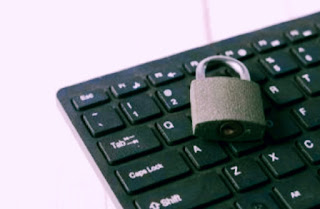It is difficult for SMBs to understand how to protect their organization's network, especially if there is no IT staff on staff to monitor and maintain the network.
However, there are a number of advanced computer network security techniques that business owners can implement today to keep their data safe and better protect against hackers and viruses.
Install and monitor firewall performance
Update passwords at least once a quarter
Rely on advanced endpoint detection
Create a virtual private network (VPN)
Train your employees
Filtering and removing spam
Turn off computers when not in use
Encrypt your files
Safe personal devices
Contact the specialists
Install and monitor firewall performance
A firewall is a piece or collection of software or hardware designed to block unauthorized access to computers and networks. In simple terms, a firewall is a set of rules that control inbound and outbound network traffic. Computers and networks that "follow the rules" are allowed access to access points, and those that do not do not have access to your system.
Firewalls are becoming more and more sophisticated (along with hackers), and the newest are integrated network security platforms, which consist of a variety of approaches and encryption techniques working in tandem to prevent break-ins.
Update passwords at least once a quarter
online securityWe hope your employees know how to avoid default passwords or phrases like "password", "12345" and their dates of birth. In addition to using passwords consisting of letters, symbols and numbers, and some capital letters, for added security, require employees to regularly change any personal passwords used on systems that have access to business networks (your business will have its own, but many computers also allow personal passwords).
Tell employees that it is a bad idea to replace letters with similarly shaped characters, such as “pa $$ w0rd” instead of “password,” when choosing passwords. Hackers know this trick.
The recommended frequency of changing passwords is quarterly, but more often. However, there is a fine line: changing passwords too often can cause confusion, forcing employees to turn to IT for reminders of their username and passwords.
Note: Many businesses now require two-factor authentication to connect to the network. In addition to entering a username and password, users may also need to enter a code, which they receive in text or otherwise, to connect to a system or Wi-Fi network.
Rely on advanced endpoint detection
cybersecurityTo respond to the ever-evolving online threats in today's world, Advanced Endpoint Detection and Response is a technology that uses AI to track signs of a breach and respond accordingly. The technology collects and analyzes information from network devices, endpoint logs and threat intelligence channels to identify security incidents, policy violations, fraudulent activities and other threats. For faster response times, these solutions use a high degree of automation to enable security teams to quickly identify and respond to threats.
Signs of a compromise include behavioral characteristics associated with intruders, malware, ransomware, and traditional virus-like behavior. Endpoint discovery and response is part of today's multi-layered proactive cybersecurity approach to defend against ever-changing cyber attacks. It is a more advanced method than antivirus software.
Create a virtual private network (VPN)
Due to the pandemic, millions of employees are now working remotely, so the number of reported cybercrimes has increased by 300% since the spread of COVID-19. VPNs create a much more secure connection between remote computers (home networks or computers used by people on the road) and other "local" computers and servers.
These networks are, in fact, only accessible to people who need to have access to your systems, including your wireless network, and equipment authorized in your network settings. A VPN can greatly reduce the likelihood of hackers finding the entry point and wreaking havoc on your system.
Train your computer security personnel
protection of the network from hackingAll of the tools and techniques described above will not do much good if the people using your system do not follow standard computer security practices. To convey the importance of computer security, some organizations provide computer literacy training to staff on a mandatory basis. Employees are trained to avoid serious security threats and are arguably the best weapon you have in your fight against cybercrime. And frequent reminders of risks and measures to mitigate them will help employees not forget about safety.
Filtering and removing spam
Phishing emails from hackers are designed to entice your employees to open them and click sensational offers or links. Spam filters are well advanced and should be used. Even so, occasional email spam can get through, especially if the hacker is impersonating someone you know, such as a professional colleague or the company you do business with. Employees need to use common sense in addition to any spam filtering software. And training employees in cyber hygiene will help with this (see the advice above).
Turn off computers when not in use
When was the last time you shut down your computer after a long day at work? When your computer is idle all night while connected to your company's network, it becomes more visible and accessible to hackers. By turning off your computer, you restrict their access to your network. And if they already got access, you break their connection.
Encrypt your files
 |
| cybersecurity |
The thought of a hacker breaking into your network is a serious cause for concern. But what is their surprise when all they find is a bunch of nonsense? Encryption can protect sensitive data on Windows or macOS using software specially designed to mask your IP address. You can determine if a website was protected with encryption by looking at "https" in the address bar along with a padlock icon.
Protect your personal devices
Employees are increasingly using their smartphones and other personal devices to access information at work. Consider implementing a personal device policy to ensure people adhere to security protocols. Some quick tips to protect both personal information and sensitive work data include turning off Bluetooth, not using unsecured public Wi-Fi, and following the same tips for complex passwords for personal devices as you do for your work computer systems.
Ask for help
When you manage your IT infrastructure internally, you need to make sure that you are properly protected from hacks and viruses. Despite all of these measures in place and ensuring that employees follow best practices, it remains challenging to deal with the latest cyber threats. One employee who forgot to change the default settings or clicked on a seemingly innocent link from someone is enough.
Perhaps the best way to overcome these challenges is to seek help from security professionals who are always up to date with the latest threats and whose job it is to make your systems as secure as possible.



Add Comments